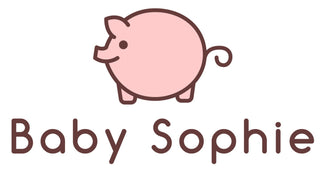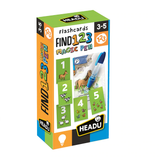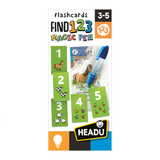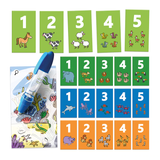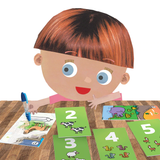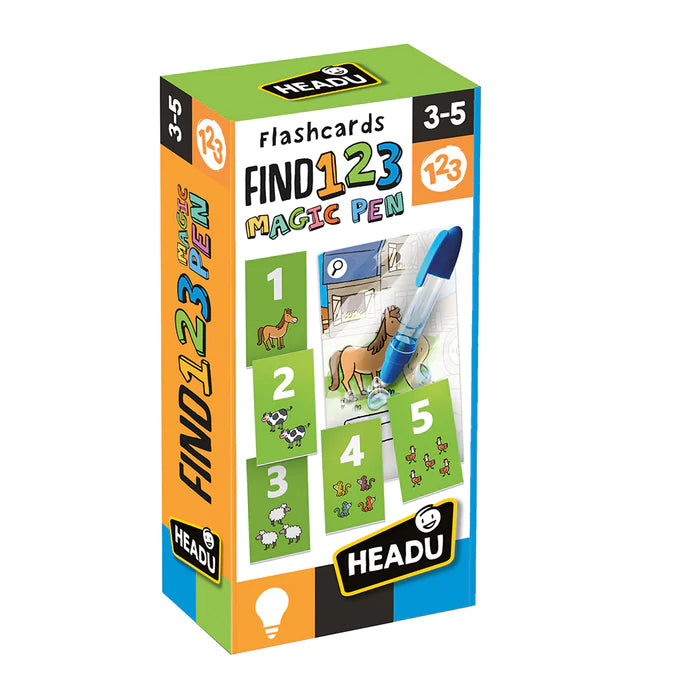HEADU
Headu Flashcards Find 123 Magic Pen
SKU: HEA22
With water-filled magic pen!
Learn to count with the magic pen, bringing the pictures to life with water. Then start all over again when they dry!
PREPARATION Open the plastic pen, fill it with water and then close it. Arrange the cards on a playing surface with the black and white side (which we will call the back) face down.
1/ Find and count with the magic pen. The first activity is the discovery of numbers from 1 to 5. The children observe the cards with the animals and digits: a specific quantity of animals is associated with each digit. Say aloud the names of the animals and their corresponding numbers, like this: “One horse, two cows, three sheep” and so on, for all of the given habitats. The subjects of the cards are as follows: SEA: 1 dolphin, 2 octopuses, 3 turtles, 4 crabs, 5 seahorses JUNGLE: 1 Indian elephant, 2 tigers, 3 orangutans, 4 sloths, 5 toucans FARM: 1 horse, 2 cows, 3 sheep, 4 cats, 5 chickens SAVANA: 1 hippopotamus, 2 lions, 3 zebras, 4 antelopes, 5 meerkats At this point we turn the cards over. On the back, the children will have to look for the quantities of animals represented on the front using the magic pen. Use the marker to paint water on the drawing: colours will magically appear, allowing the children to observe an environment populated by the same animals as on the front. Help the children to look for the animals, to point at them with their fingers and say the corresponding number aloud. In this way the children will begin to start counting. When the cards dry, the colours will disappear.
2/ Let’s compare quantities and play with numbers. With these cards it is possible to carry out comparison activities of quantities and numbers, teaching children to count up to 5 and to work with numbers. If we show the children a card with only one element (for example “one elephant”) and a card with more elements (for example “three orangutans”) it is easier to make them understand the differences between quantities. Let’s compare two quantities and ask them which set has more elements and which one has fewer. We then present two more cards and proceed in the same way. We can also ask the children to find and group cards with equal quantities, for example: 1 elephant, 1 hippo, 1 dolphin and 1 horse. Finally, we can ask the children to put a series of numbers in order, from 1 to 5 and vice versa, thus having them count forwards and backwards.
3 / Organize the animals by their correct habitat After the children have discovered the animals in their environment, by colouring the cards with the water pen, you can ask them to group the cards by habitat. For example: “Look for the jungle animals”. The child is also helped by the colours on the front of the cards: a different colour is assigned to each environment.
4 / Reassemble the habitats Children can have fun reassembling the four environments by placing the cards side by side (each habitat consists of five cards). Have them carefully observe the reconstructed images. Encourage the children to observe all the details in the drawings, to point at them with their fingers and to say their names aloud. In this way they learn to concentrate on details and specifics, refining perception and developing their vocabulary
